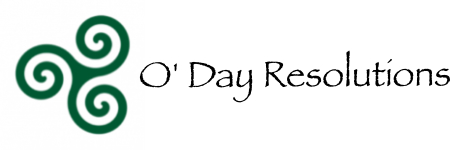Many family law attorneys have heard the buzz about “collaborative law.” Other lawyers may not have heard much if anything about this new process. Many circuits in Florida now have Administrative Orders defining collaborative law, and the Florida Bar is working to establish statewide rules which will govern the process. Therefore, this is a good time to become conversant with collaborative law, and to learn how it might apply to your practice area.
Collaborative law has been around for twenty years nationally but only recently started reaching us locally in a big way. Where the relationship of the parties is an important element of the legal dispute and where there are emotional drivers, the lawyer should consider a collaborative approach as an appropriate method of dispute resolution. An obvious choice for using a collaborative approach is a family law case involving minor children. When minor children are involved, the parties will have to maintain a relationship if only to co-parent their children. Several studies establish that children who have been the subject of high conflict divorces are at significantly greater risk of experiencing both short and long term emotional and psychological issues. The sooner divorcing parents can settle their disputes and transition to co-parenting, the sooner they can focus their combined efforts on helping their children adjust to the new family dynamic.
Divorces with minor children are but one of the types of legal matter that may benefit from a collaborative approach. Probate cases, elder law guardianships, family-owned or closely-held business dissolutions, and other legal cases involving people with long term ties also may benefit from using a collaborative model.
The collaborative model removes the dispute from the entire court system. A collaborative team is established, consisting of a lawyer for each participant, and a collaborative facilitator. In many cases, the team also might include a neutral financial expert and a neutral mental health expert. Using a divorce as an example, each party would have a specially trained collaborative attorney, led by a collaborative facilitator who acts as the neutral, focal point of the process and who assures that the dispute proceeds in an orderly and respectful manner. This person is often, also, the mental health expert for the team. The neutral mental health expert will assist the parties’ with their emotional needs and, if relevant to the case, address parenting issues with the parties. If there are financial issues, the parties may hire one financial expert to work with them to prepare their financial affidavits and address other financial aspects of the case.
The primary difference between a collaborative case and a litigated case is that, in collaborative, the parties and the professional team all sign a contract agreeing that they will work together to resolve their issues without litigation. The parties make an agreement to fully and honestly disclosure information related to the case. There is no “hide and seek” or ambushing in a collaborative case. Additionally, participants agree to be respectful of each other and avoid all disparaging comments. If there are minor children involved, the parties agree to insulate them from the proceedings and to otherwise work together to minimize the impact on the children.
The agreement specifically states that there will be no litigation during the collaborative process. The only way that the case will proceed to litigation is if the parties withdraw from the process. If this happens, then all of the professionals on the team must withdraw and cannot be involved in a subsequent, litigated case. This usually leads many professionals to decide that this collaborative work is not for them. While the objection is understandable, the attorney is well-advised to consider collaborative practice as one of the tools in the attorney’s toolbox nonetheless. The possible withdraw of the attorneys is the “stick” that keeps everyone honest and at the table, and prevents the posturing that many of us have come to expect in a litigated matter.
In collaborative, no one threatens to file pleadings to gain advantage. Instead, the parties look for win-win solutions which can be reduced to an agreement. Professionals must go through separate training to work in a collaborative case. One is trained to undergo a “paradigm shift,” meaning that one learns to look at the dispute from a solution-oriented approach rather than from a “what is my best day in court” approach. The professionals are bound to respect that the parties have agreed that they want to find solutions via a collaborative process, and it is the professionals’ job to get them there.
.Over ninety percent of collaborative cases settle, and such a settlement may be maintained privately, which is another advantage. This is why celebrities such as T. Boone Pickens, Roy Disney, and Arnold Schwarzenegger have all chosen collaborative divorce over having their divorces litigated.
If you are interested in learning more about collaborative law or becoming trained as a collaborative attorney, there is a training scheduled in Tampa, March 20-22, 2014. Please contact the Family Court Professional Collaborative for more information.

